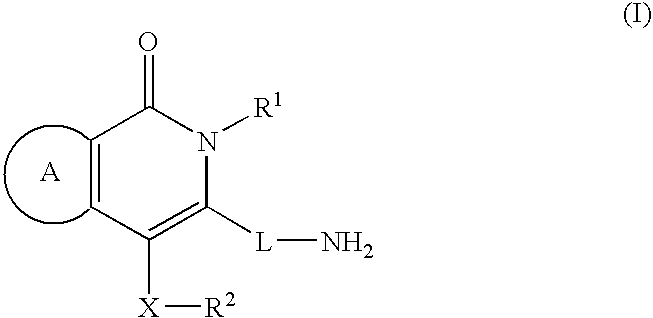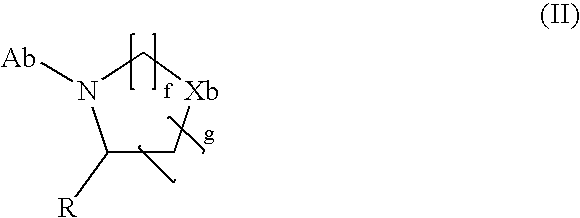Agent for treating diabetes
- Summary
- Abstract
- Description
- Claims
- Application Information
AI Technical Summary
Benefits of technology
Problems solved by technology
Method used
Image
Examples
example 1
[0198] Compound A (150 mg), lactose (1184 mg), corn starch (360 mg), HPC-L (trade name, manufactured by Nippon Soda Co., Ltd.) (60 mg), carboxymethylcellulose calcium (trade name: ECG505, manufactured by Gotoku Chemical Company Ltd.) (60 mg), crystalline cellulose (trade name: Avicel, manufactured by Asahi Kasei Corporation) (172 mg), and magnesium stearate (14 mg) were mixed in a mortar. 200 mg of the resultant mixture was compressed using a hydraulic pump press (manufactured by Riken Seiki Co., Ltd.) to obtain a tablet with a diameter of 8 mm.
experimental example 1
[0199] Streptozocin (STZ) (120 mg / kg bodyweight) was administered to a 1.5-day-old male WKY rat to obtain a type 2 diabetes model, N-STZ-1.5 rat.
[0200] N-STZ-1.5 rats (male, 24 animals) received orally glibenclamide (10 mg / kg bodyweight / day) for 4 weeks to become a model of type 2 diabetes with sulfonylurea secondary failure. Then, the rats were divided into 4 groups of Groups A to D (6 animals each). Group A (control group), Group B, Group C and Group D were treated with oral administration of a 0.5% methylcellulose suspension, glibenclamide (10 mg / kg bodyweight), nateglinide (50 mg / kg bodyweight) and Compound A (3 mg / kg bodyweight), respectively. (Hereinafter, the methylcellulose suspension, glibenclamide, nateglinide and Compound A administered to Groups A to D are sometimes collectively referred to as the test compound.)
[0201] Then, each rat received orally 1 g / kg bodyweight of glucose solution. Before administration of glucose (before and after administration of the test comp...
experimental example 2
[0208] N-STZ-1.5 rats (male, 24 animals) prepared in Experimental Example 1 were divided into 4 groups (6 animals each), of which 2 groups (hereinafter sometimes referred to as Group M) and the remaining 2 groups (hereinafter sometimes referred to as Group G) received orally a 0.5% methylcellulose suspension and glibenclamide (10 mg / kg bodyweight) respectively, for 4 weeks. After repeated administration for 4 weeks, one Group M and one Group G (control groups) received orally a 0.5% methylcellulose suspension and the other Group M and the other Group G received orally glibenclamide (10 mg / kg bodyweight).
[0209] Then, each rat received orally 1 g / kg bodyweight of glucose solution. Before administration of glucose solution and 10 and 60 minutes after the administration, blood samples were taken from the caudal vein of the rat and then the plasma glucose level and the plasma insulin level were determined.
[0210] The plasma glucose level and the plasma insulin level were determined in t...
PUM
 Login to View More
Login to View More Abstract
Description
Claims
Application Information
 Login to View More
Login to View More - R&D
- Intellectual Property
- Life Sciences
- Materials
- Tech Scout
- Unparalleled Data Quality
- Higher Quality Content
- 60% Fewer Hallucinations
Browse by: Latest US Patents, China's latest patents, Technical Efficacy Thesaurus, Application Domain, Technology Topic, Popular Technical Reports.
© 2025 PatSnap. All rights reserved.Legal|Privacy policy|Modern Slavery Act Transparency Statement|Sitemap|About US| Contact US: help@patsnap.com



